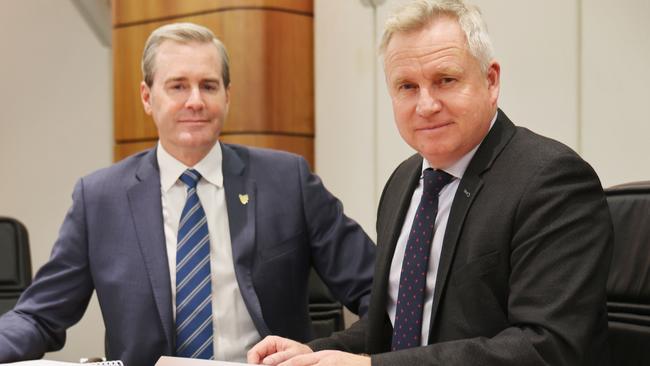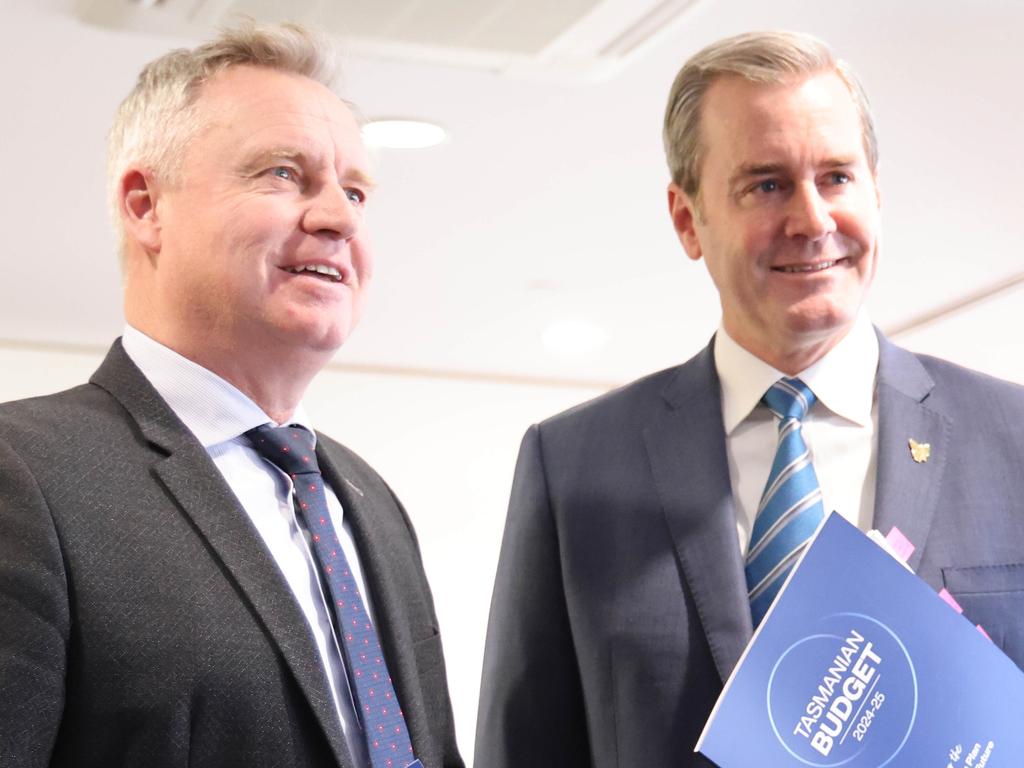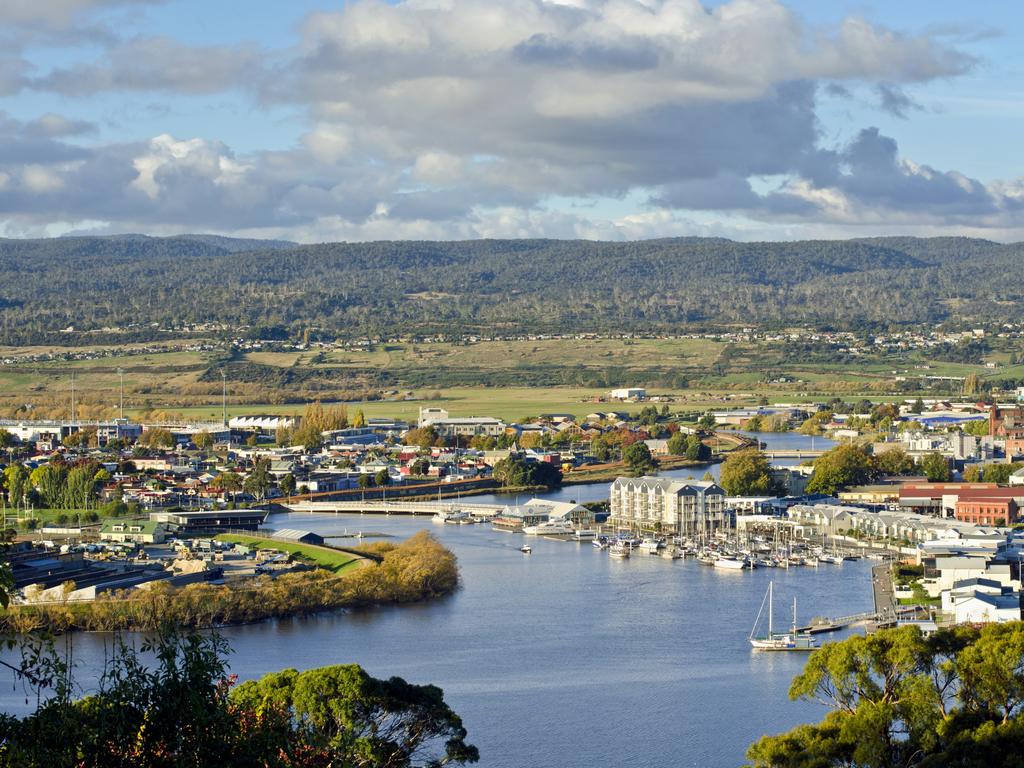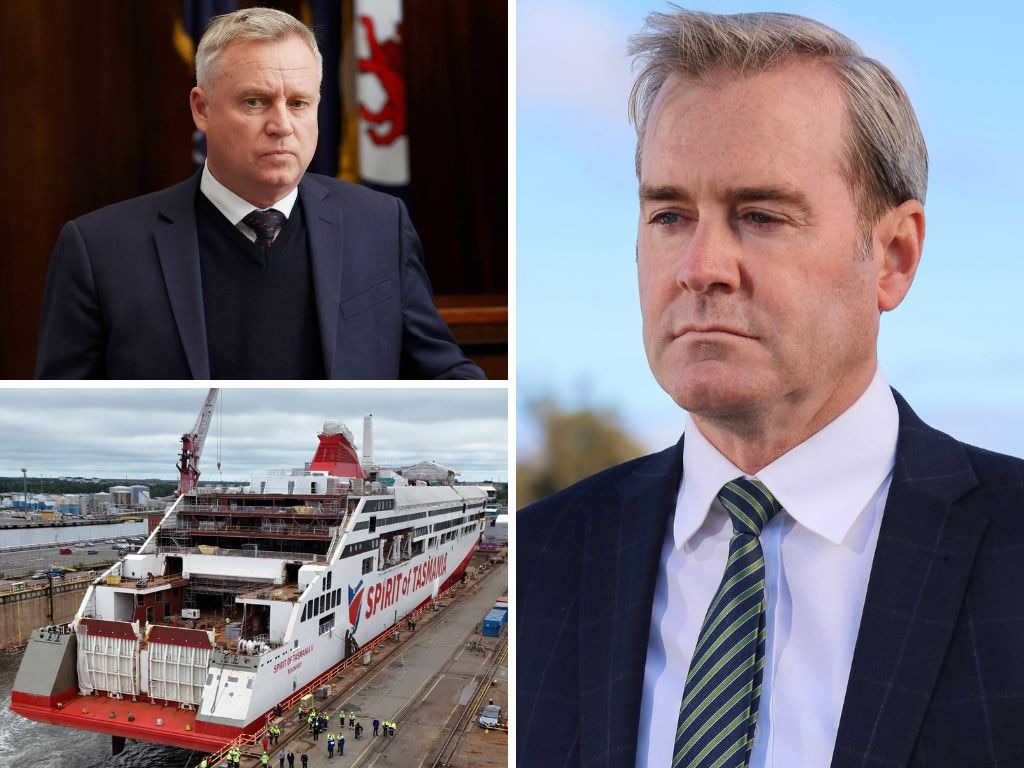No end to debt spiral, as Tas Budget puts infrastructure, services on taxpayer credit card
Tasmania’s Premier and Treasurer have declined to say when they will halt the state’s sharp descent into debt, as promises of a distant surplus appear undermined by treasury warnings.

Tasmania’s Premier and Treasurer have declined to say when they will halt the state’s sharp descent into debt, as promises of a distant surplus appear undermined by treasury warnings.
The first budget since the nation’s last Liberal state government was plunged further into minority at the March election grows overall operational spending by 3.2 per cent.
This delivers $1.3bn in election promises in health, education, community support and policing, and splurges $3.9bn on infrastructure, including the new Hobart AFL stadium.
However, net debt – eliminated before the Liberals came to office in 2014 – will more than double from $3.5bn in 2023-24 to $8.59bn in 2027-28.
The $1.5bn deficit in 2023-24 falls gradually to $63m in 27-28, with Treasurer Michael Ferguson promising a surplus in 2029-30, beyond this budget cycle, as exclusively revealed in The Australian.
However, Treasury analysis in the budget papers suggests this relies on a number of risks not eventuating, including cuts to Tasmania’s share of GST and unfavourable federal funding deals on health, education and infrastructure.
The Australian asked Mr Ferguson and Premier Jeremy Rockliff to nominate when the rapid descent into debt would be halted, but they declined to nominate a date.
Mr Rockliff said he was confident Tasmanians would be understanding of the record debt, which without corrective action is projected by economists to grow to $16bn – 25 per cent of gross state product – by 2034-35.
“You’ve got to be mindful of having an over-correction too soon, because that damages the economy,” Mr Rockliff told The Australian.
“Tasmanians I believe will appreciate that we have invested in key areas that they would expect … and that, given our level of investment, that a sensible pathway to surplus is a measured but purposeful response.”
Mr Ferguson, who dismissed concerns about budget sustainability as “whinging”, told The Australian the rising debt would be halted “over time”, after the budget was balanced from 2029-30.
“The assets that we’re building are going to support us in terms of population growth and jobs growth needed in the long-term,” he said.
Both men refused to rule out another $1bn-plus in promises at the next election, due in 2028, even though such largesse would seemingly make their promised 2029-30 surplus impossible.
A $5.1bn infrastructure spend across the budget years includes $1.9bn on roads and bridges, $650m on hospitals and health facilities, $610m for development of Hobart’s Macquarie Point, including $355m for the stadium.
An efficiency dividend of .5 per cent will raise $300m, however overall there are three dollars in new spending for every one saved.
Treasury also warns the modest savings push “will require committed action to identify and implement”, with “a corresponding risk” of even more debt if department chiefs fail to meet the target.
Tasmania’s population growth has slowed, from 0.6 per cent in 2022-23 to 0.4 per cent, but is projected to pick up to 0.7 per cent by 2026-27.
Gross state product will dip from 2 per cent in 2023-24 to 1.25 per cent in 2024-25, before rising to a projected 2.5 per cent from 2026-27.
Unemployment is forecast to rise slightly, from 4.1 per cent in 2023-24 to 4.5 per cent from 2025-26.
The infrastructure spend continues across the budget years but moderates from $1.1bn in 2024-25 to $787m in 2027-28.
Tasmania’s underlying reliance on the federal government deepens, with commonwealth grants making up 65pc of state revenue.
The Labor opposition savaged the budget as “the worst in Tasmania’s history”. “It’s a minority government disaster and there is no plan to turn it around,” said Labor finance spokesman Josh Willie. “There is no pathway to surplus, no plan to pay down debt, and no plan to improve our essential services.
“After 10 years in office, the Liberals have mortgaged Tasmania’s future - and in doing so they’ve destroyed their financial and economic credibility.”
Tasmania’s peak business body expressed serious concern. “If the government doesn’t do more to prioritise budget repair the state’s finances will be cooked,” said Michael Bailey, chief executive of the Tasmanian Chamber of Commerce and Industry.
Independent MPs, who hold the balance of power and provide supply, also expressed alarm. “Tasmania’s finances are out of control,” said independent Kristie Johnston. “Our balance sheet has never looked so grim. The community’s credit card has been maxed out.”
Former Lambie MPs turned independents, Rebekah Pentland and Miriam Beswick, welcomed funding for their suggested $16m schools improvement program, but expressed concern there was “no sign of the structural change needed”.







To join the conversation, please log in. Don't have an account? Register
Join the conversation, you are commenting as Logout